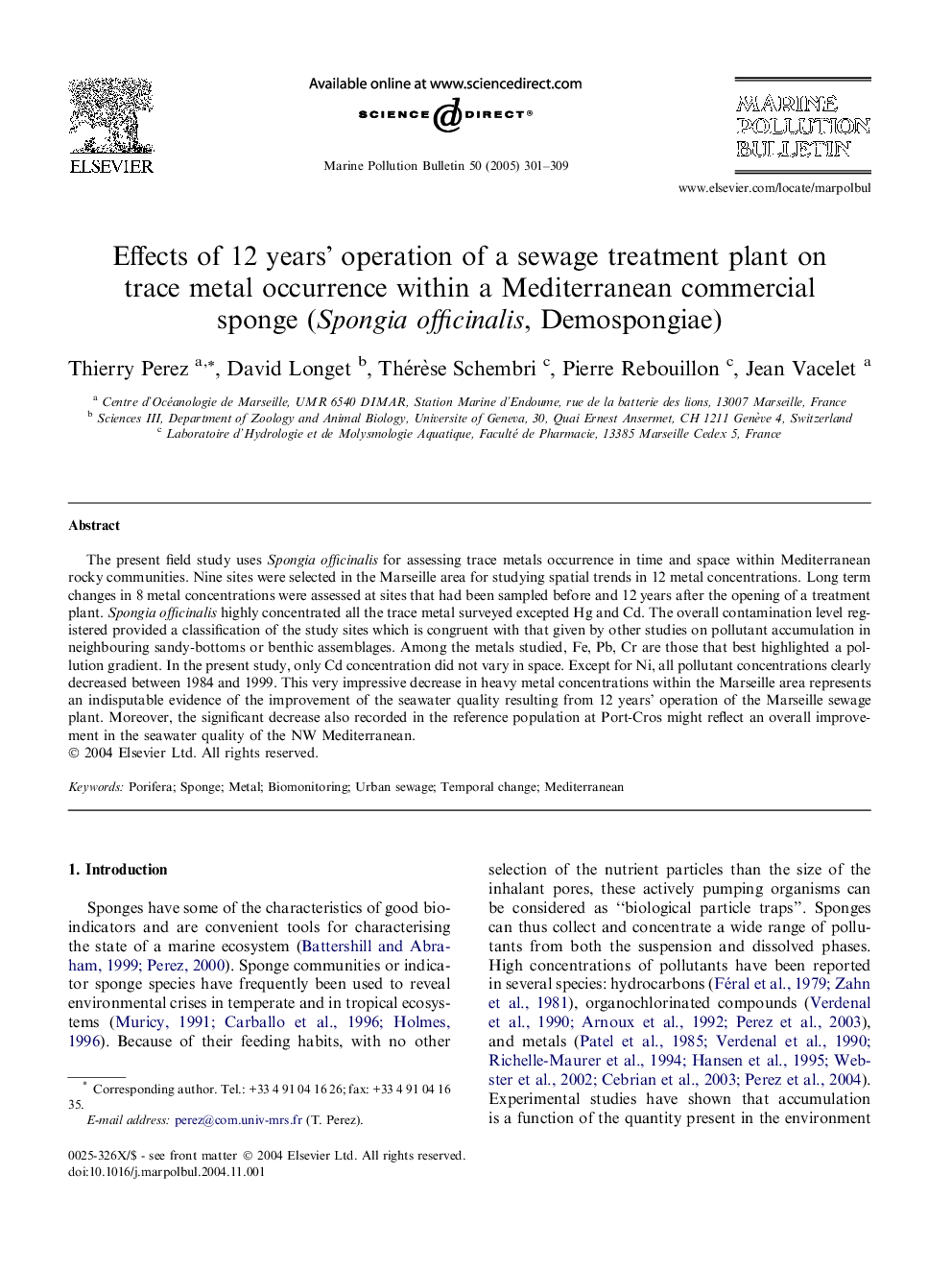| Article ID | Journal | Published Year | Pages | File Type |
|---|---|---|---|---|
| 9466077 | Marine Pollution Bulletin | 2005 | 9 Pages |
Abstract
The present field study uses Spongia officinalis for assessing trace metals occurrence in time and space within Mediterranean rocky communities. Nine sites were selected in the Marseille area for studying spatial trends in 12 metal concentrations. Long term changes in 8 metal concentrations were assessed at sites that had been sampled before and 12 years after the opening of a treatment plant. Spongia officinalis highly concentrated all the trace metal surveyed excepted Hg and Cd. The overall contamination level registered provided a classification of the study sites which is congruent with that given by other studies on pollutant accumulation in neighbouring sandy-bottoms or benthic assemblages. Among the metals studied, Fe, Pb, Cr are those that best highlighted a pollution gradient. In the present study, only Cd concentration did not vary in space. Except for Ni, all pollutant concentrations clearly decreased between 1984 and 1999. This very impressive decrease in heavy metal concentrations within the Marseille area represents an indisputable evidence of the improvement of the seawater quality resulting from 12 years' operation of the Marseille sewage plant. Moreover, the significant decrease also recorded in the reference population at Port-Cros might reflect an overall improvement in the seawater quality of the NW Mediterranean.
Related Topics
Physical Sciences and Engineering
Earth and Planetary Sciences
Oceanography
Authors
Thierry Perez, David Longet, Thérèse Schembri, Pierre Rebouillon, Jean Vacelet,
